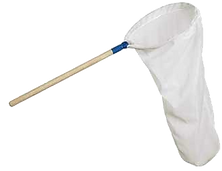Meeting April 22nd: Rising Tide of Tick-borne Diseases
Just a reminder our April meeting will be THIS Friday at 7:30pm, with dinner and silent auction at 6:30. It will be held IN PERSON at the CT Agricultural Station in New Haven with a Zoom option (email ctentsoc@gmail.com for link). Sign into the meeting and you will be able to view the talk. Feel free to bring items for the auction, snacks for sharing, and insect related exhibits to share with members. Also if you haven't paid your dues this would be the ideal time!
Title: Bracing for the Worst--Climate and Ecological Changes, Accelerating Range Expansion of Tick Vectors, and Rising Tide of Tick-borne Diseases
Date: April 22 at 7:30pm
Speaker: Goudarz Molaei, PhD
Affiliation: Connecticut Agricultural Experiment Station; Yale School of Public Health
Abstract: Ticks and tick-borne diseases are increasingly becoming a major health concern for humans, domesticated animals, and livestock. As the geographic ranges of multiple tick species continue to expand, invasive tick species are being discovered, new tick-borne pathogens are emerging, and coinfections in ticks are surging. In recent years, we have discovered established populations of the Gulf Coast tick, Amblyomma maculatum and the Asian longhorned tick, Haemapysalis longicornis, as well as additional populations of the lone star tick, Amblyomma americanum in the Northeastern U.S. Each of these aggressive, human-biting tick species are recognized vectors of multiple pathogens of human and veterinary concern. There is considerable evidence to indicate that faster rates of changes in climatic factors, including temperature, precipitation, and humidity, coupled with ecologic and land use changes are contributing to accelerated geographic range expansions of these tick species. It is not clear how these tick species will compete and interact with other tick species with pervasive and expanding populations and how the tick-borne disease landscape will be altered in the Northeast. We will discuss recent changes in the frequency, abundance, and dynamics of different tick species activity, increases in the rates of infection and co infections with tick-borne pathogens, the incursion and range expansion of the three tick species based on the results of our long-term tick and tick-borne diseases surveillance data and recent field studies. We will also discuss potential contributing factors, and how incursion and range expansion of invasive tick vectors will affect the tick-borne disease landscape of the Northeastern U.S., a region already overwhelmed by Lyme disease and other tick-borne diseases.
Hope to (physically) see you there!








Komentarai